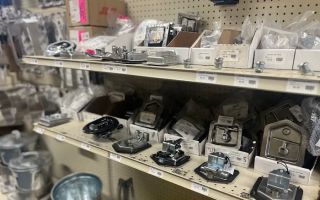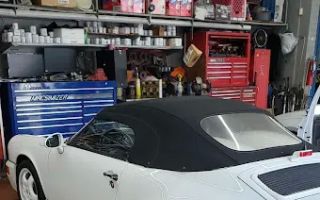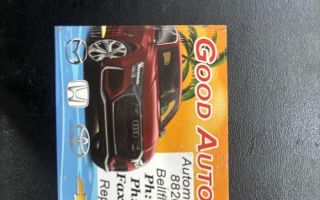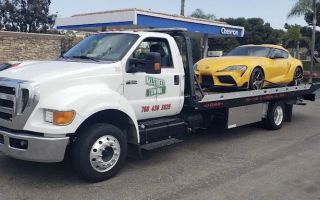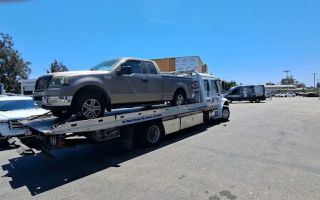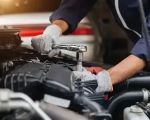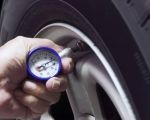How to Prevent Flat Tires with Proper Vehicle Maintenance
A flat tire is one of the most common and frustrating car problems that drivers face, especially on long trips or when you’re least expecting it. As someone who’s had my fair share of flat tires, I can tell you that the best way to avoid them is by staying proactive with your vehicle’s maintenance. In this article, I’ll walk you through effective strategies for preventing flat tires, ensuring you spend more time on the road and less time dealing with roadside troubles.

House of Tires
3146 Hempstead Tpke, Levittown, NY 11756, USA
1. Check Tire Pressure Regularly
The first and most essential step in preventing flat tires is maintaining the proper tire pressure. Over-inflated or under-inflated tires can cause excessive wear, increase the likelihood of tire blowouts, and ultimately lead to a flat. From my experience, it’s easy to overlook tire pressure until it’s too late, but this simple check can save you from a major headache down the road.
Here’s how to keep your tires properly inflated:
- Use a Tire Pressure Gauge: Invest in a good quality tire pressure gauge, or visit gas stations that offer free air compressors with built-in gauges. Always check your tire pressure when the tires are cold, as heat can increase the readings and give inaccurate results.
- Follow Manufacturer Recommendations: The recommended tire pressure for your vehicle can usually be found on a sticker inside the driver’s side door frame. Check the specifications for both front and rear tires, as they may differ.
- Use a Digital Gauge: Digital tire pressure gauges tend to be more accurate and easier to read compared to analog ones. Keeping track of tire pressure regularly will ensure that your tires remain in optimal condition.
2. Inspect Tires for Damage and Wear
It’s easy to forget about your tires until you notice a problem, but regular inspections are vital to preventing flat tires. Damaged tires can have visible issues like cracks, punctures, or embedded objects that can cause slow leaks or sudden blowouts. I once had a flat tire after unknowingly driving over a nail that slowly deflated my tire over the course of a few days. Regularly checking your tires can help avoid situations like this.
Here’s what you should be looking for during your tire inspections:
- Look for Punctures: Check the tire’s surface for any visible punctures, nails, or sharp objects that could potentially damage the tire. If you spot something lodged in the tire, don’t remove it until you’ve had it professionally assessed.
- Check for Cracks and Bulges: Cracks and bulges in the sidewall of the tire are signs of damage and can indicate that the tire is weak and prone to blowing out.
- Monitor Tread Depth: The tread of your tire is crucial for maintaining traction, especially on wet or slick surfaces. Use a tread depth gauge to ensure your tires meet the legal limit (usually around 2/32 of an inch). If the tread is too low, it’s time for a replacement.
3. Rotate Tires Regularly
Tire rotation is one of the most overlooked aspects of tire maintenance. If you neglect this step, certain tires will wear out more quickly, increasing your chances of a flat. The reason for this is that the weight distribution of your vehicle isn’t always even, and tire rotation helps ensure that all four tires wear evenly. I learned the importance of tire rotation the hard way when my front tires wore out much faster than the rear ones, leaving me with uneven tread and a higher risk of flats.
Here’s why and how to rotate your tires:
- Prevents Uneven Wear: By rotating the tires every 6,000 to 8,000 miles (or as recommended by your vehicle’s manual), you give each tire a chance to wear evenly. This helps prolong their lifespan and maintain optimal performance.
- Improves Gas Mileage: Proper tire rotation ensures better contact with the road, improving gas mileage and reducing wear on other parts of your vehicle.
- Hire a Professional: Although tire rotation can be done at home with the proper tools, it’s best to have a professional mechanic rotate your tires, especially if you have a heavy-duty vehicle or don’t have the right equipment.
4. Avoid Overloading Your Vehicle
Overloading your vehicle puts unnecessary stress on the tires, which can lead to tire blowouts and flats. As someone who used to drive with a car packed to the brim for road trips, I can attest to the fact that the more weight you put on your tires, the more likely they are to wear out or get damaged. Keeping an eye on your vehicle’s weight capacity will save you from tire-related issues during your travels.
Here’s how to prevent overloading your vehicle:
- Check Your Vehicle’s Gross Vehicle Weight Rating (GVWR): The GVWR can be found on the driver’s side door frame or in the owner’s manual. This rating indicates the maximum weight your vehicle can safely carry, including passengers, luggage, and any gear. Never exceed this limit.
- Distribute the Weight Evenly: Even if you’re within the weight limit, make sure the weight is distributed evenly across the vehicle. Uneven weight can cause excessive strain on individual tires.
- Avoid Excessive Cargo: If you’re carrying large items or towing a trailer, make sure your tires are rated for the added weight. Tires have load ratings, and exceeding them can lead to catastrophic failure.
5. Keep Your Vehicle Aligned
Proper wheel alignment ensures that your tires wear evenly and prevents unnecessary pressure from building up in certain areas. Misalignment can cause your tires to wear out faster, making them more prone to punctures and flats. I’ve personally noticed that my tires last longer and perform better when my vehicle is properly aligned.
Here’s how you can maintain proper alignment:
- Pay Attention to Signs of Misalignment: If your steering wheel pulls to one side or if your vehicle vibrates at high speeds, it could indicate a misalignment issue. It’s important to address this promptly to prevent uneven tire wear.
- Have Regular Alignments: Get your vehicle’s alignment checked whenever you get new tires or if you notice steering issues. It’s a relatively inexpensive service that can save you money in the long run.
6. Replace Tires When Necessary
No matter how well you maintain your tires, they will eventually need to be replaced. Worn-out tires are more susceptible to flat tires, blowouts, and poor performance in adverse conditions. I always make sure to replace my tires once they’ve reached the end of their lifespan to ensure I’m driving on safe, reliable tires.
Here’s when to replace your tires:
- Check the Tread Depth: As mentioned earlier, when the tread depth reaches 2/32 of an inch, it’s time for new tires. Tires with too little tread won’t provide enough grip on wet or slippery roads, increasing the risk of flats.
- Look for Visible Damage: If your tires have deep cuts, punctures, or large bulges, it’s time for a replacement. Damaged tires can lead to unexpected flats and dangerous driving conditions.
- Check the Age of Your Tires: Even if the tread looks fine, tires can degrade over time. Most manufacturers recommend replacing tires every 6-10 years, regardless of wear, to ensure maximum safety and performance.


